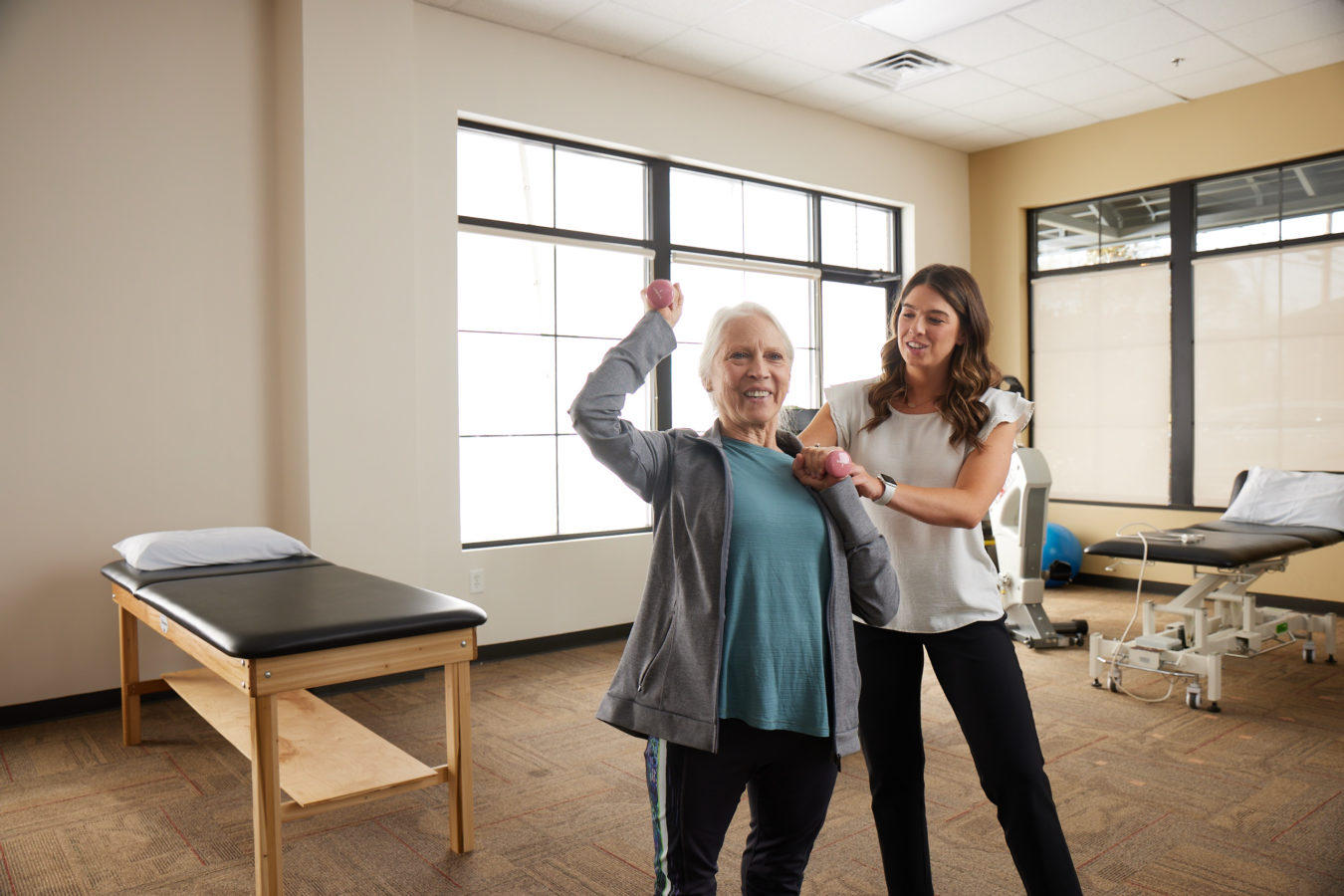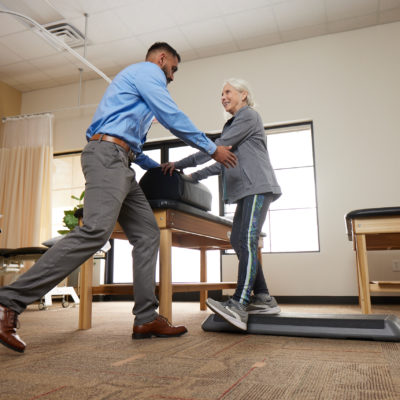
The structural deterioration of bone tissue in osteopenia, and osteoporosis can lead to an increased risk of fracture with aging–but physical therapy can help.
According to the National Institute of Health Osteoporosis and Related Bone Disease Resource Center, over 40 million people are diagnosed with osteoporosis or are at high risk due to low bone density each year. In addition, approximately one in two women and one in four men, age fifty and older, will suffer from a fracture related to osteoporosis.
A comprehensive physical therapy program can help prevent fractures and falls and introduce beneficial assistive devices.



Comprehensive medical treatment can include proper nutrition, exercise, safety education for fall prevention, and appropriate therapeutic medications. Physical therapy can help strengthen bones and prevent fractures by assisting patients with fall prevention – patients will begin a regular exercise program to strengthen muscles and improve balance under the supervision of a physical therapist. Osteopenia and osteoporosis treatments may include:



*Services are not available at every location. Visit our Locations page for more details.